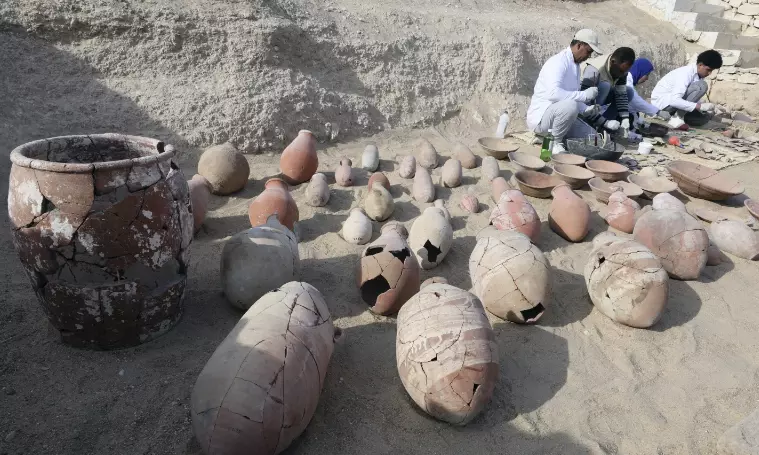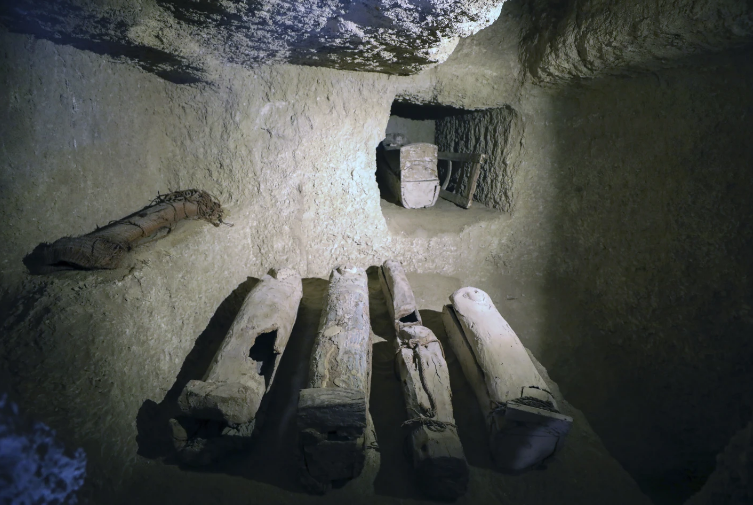Egypt unveils ancient rock-cut tombs and burial shafts in Luxor

Egypt on Wednesday revealed significant archaeological discoveries near the historic city of Luxor, including ancient rock-cut tombs and burial shafts dating back approximately 3,600 years.
The findings were uncovered at the causeway of Queen Hatshepsut’s funerary temple in Deir al-Bahri, located on the Nile’s West Bank. According to the Zahi Hawass Foundation for Antiquities & Heritage, which collaborated with the Supreme Council of Antiquities, the excavation began in September 2022.

Artifacts Unearthed
Archaeologists discovered numerous artifacts, including:
- Bronze coins with the image of Alexander the Great from the era of Ptolemy I (367-283 B.C.).
- Children’s clay toys, cartonnage, funerary masks, winged scarabs, beads, and amulets.
- Pottery tables likely used for offerings of bread, wine, and meat.
Inside burial shafts dating to 1580 B.C. - 1550 B.C., anthropoid wooden coffins were found, including one intact coffin of a young child buried 3,600 years ago. War archery bows in the burial chamber suggest the tomb owners had military roles, possibly fighting to liberate Egypt from the Hyksos.
Key Discoveries
The discoveries include:
- Rock-cut tombs from the Middle Kingdom (1938 B.C. - 1630 B.C.).
- Burial shafts from the 17th Dynasty.
- The tomb of Djehuti-Mes, a palace overseer for Queen Teti Sheri, with inscriptions dating it to the 9th year of King Ahmose I’s reign (1550 B.C. - 1525 B.C.).
- Remains of Queen Hatshepsut’s Valley Temple.
- Part of the Assassif Ptolemaic Necropolis.
While many tombs were looted during the Ptolemaic period and later, the team uncovered key remnants that provide new insights into ancient Egyptian life and culture.
Reconstructing History
Zahi Hawass emphasized the importance of the finds, stating they could help “reconstruct history” and deepen understanding of the programs and designs inside ancient Egyptian temples.
Ptolemaic Necropolis
The team uncovered part of an extended Ptolemaic necropolis built over the remains of Queen Hatshepsut’s temple. The necropolis, largely excavated in the 20th century but inadequately documented, contained tombs made of mud bricks.
November Discoveries
In November, Egyptian and American archaeologists excavated another tomb with 11 sealed burials near Luxor in the South Asasif necropolis, close to the Temple of Hatshepsut. Dating to the Middle Kingdom, this tomb further highlights the region’s historical significance.
These findings continue to shed light on ancient Egyptian history, offering a deeper understanding of its cultural, military, and architectural legacy.

